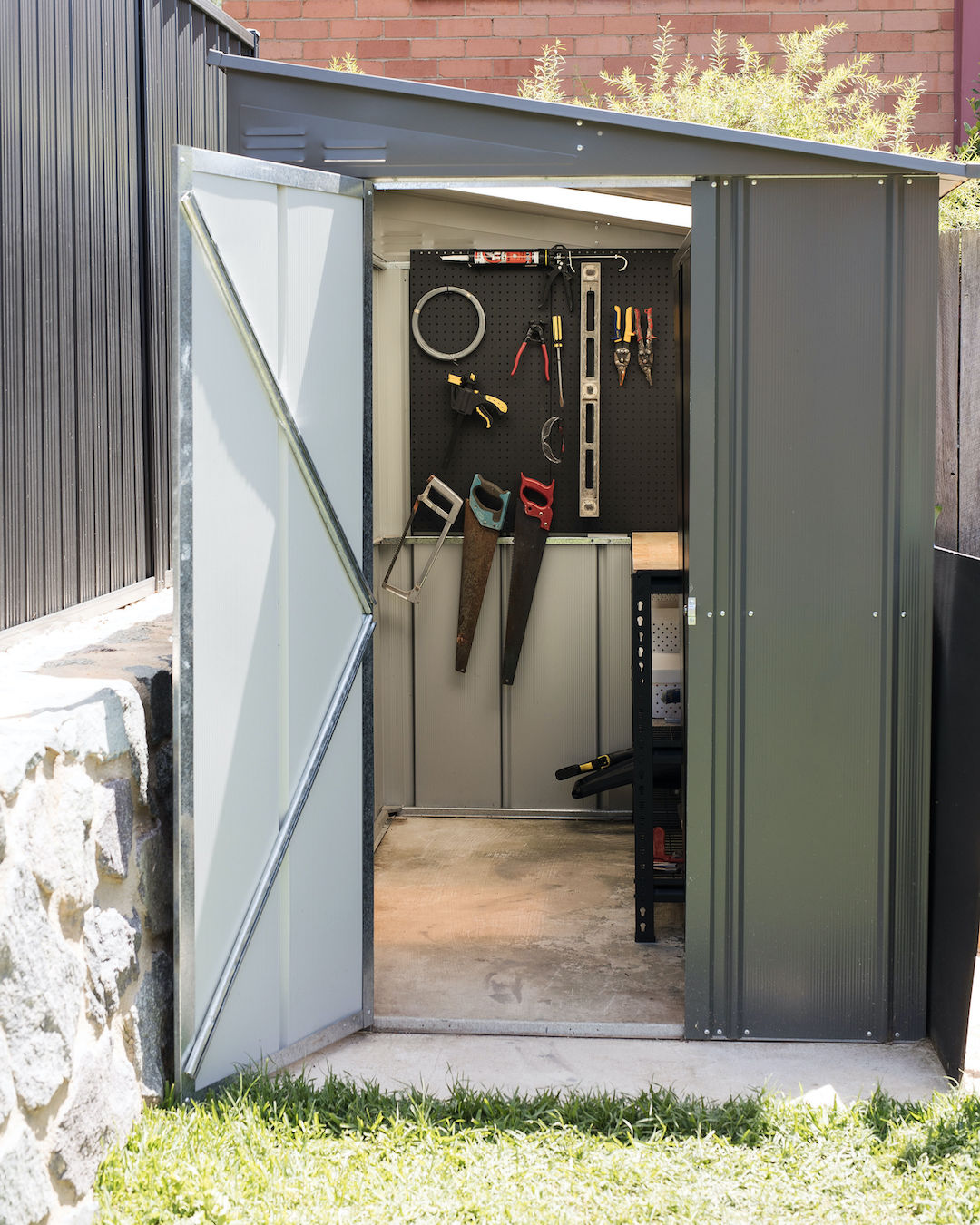When choosing the right shed, various factors come into play. From size and material to design and functionality, finding the perfect shed necessitates careful planning and consideration. This comprehensive guide will walk you through the essential steps to help you make an informed decision.
Related article: 7 ways to organise your garden shed #shedspo
Related article: Make a splash with our round up of the best pool designs

1. Assess your storage requirements
Before shopping for sheds, take some time to assess your storage requirements. Consider the items you need to store and their dimensions. Are you looking to store gardening tools, outdoor equipment or even vehicles? Farm sheds are also popular options, especially if you need space for storing agricultural equipment, housing livestock or protecting harvested crops. Understanding your storage requirements will guide you in selecting the ideal shed size and type.
2. Determine the size of the shed
Once you have a clear understanding of your storage needs, it’s time to determine the size of the shed. Measure your yard space carefully to ensure the shed fits well. Take into account any overhangs or obstacles, such as trees, rocks, garden features, etc.
In terms of the footprint and height of the shed, consider the largest and tallest possible items to store. Once you have the dimensions, allocate space for items you might acquire in the future and room to move around comfortably.
For example, if you intend to add a workshop, your shed must include shelves for organising supplies and ample storage for power tools. It should also have a spacious workbench for project assembly.
Once you have an estimate of the size, find a shed that most closely matches this estimate. Keep in mind, however, that the sizes of premade sheds are based on their external dimensions, not the usable interior space. Common sizes include 6x10m, 7x9m and 8x12m. As a general rule, opt for the larger shed size if your backyard space allows. Many individuals underestimate their storage needs.

3. Choose the right material
Sheds come in various materials, each with its advantages and disadvantages.
Most common shed materials include:
- wood
- metal (such as Colorbond)
- plastic
- vinyl.
Wood
Wooden sheds offer a classic look and can be easily customised to match your preferences. They are also durable and provide good insulation. However, wood requires regular maintenance to prevent rot and decay.
Metal
Metal sheds are durable and resistant to pests and fire. They are also low-maintenance and often more affordable than wood. However, metal sheds may be prone to rust and can be less visually appealing.
Plastic
Plastic sheds are lightweight, easy to assemble and require minimal maintenance. They are also resistant to rot, rust and pests. However, plastic sheds may not be as durable as wood or metal and can be less aesthetically pleasing.
Vinyl
By blending the aesthetic appeal of wood with the durability of plastic, vinyl sheds offer a low-maintenance and weather-resistant solution.
Consider your area’s climate and weather conditions when choosing the material for your shed.

4. Consider the design and style
Sheds are available in various designs and styles tailored to diverse preferences and architectural aesthetics. Whether you prefer a traditional barn-style shed or a modern, sleek design, options are available to complement your outdoor space.
Here are the three most common types:
- Barn-style shed: This classic design features a pitched roof with overhanging eaves, reminiscent of a traditional barn. Barn-style sheds often have double doors and a loft area for additional storage.
- Gable roof shed: Similar to barn-style sheds, gable roof sheds have a triangular roof with two sloping sides that meet at a ridge in the centre. This design provides ample headroom and allows for efficient water runoff.
- Lean-to shed: This is a simple, space-saving option that leans against an existing structure, such as a house or garage. It typically has a single-sloping roof and is ideal for narrow or limited spaces.
5. Evaluate additional features and accessories
Explore supplementary features and accessories for your shed, such as these:
- Windows: Natural lighting can make the shed more inviting and functional, especially if you plan to use it as a workspace.
- Ventilation: Proper ventilation is crucial for maintaining a comfortable environment and preventing moisture buildup.
- Shelving and organisation: Shelving units and pegboards can help you maximise storage space while organising your tools and supplies.
- Electrical outlets: Electrical outlets are a must-have feature if you intend to use power tools or lighting inside the shed.

6. Set a budget
Before shopping for sheds, it’s essential to set a budget and stick to it. Consider not only the upfront cost of the shed but also any additional expenses, such as delivery and installation fees, as well as ongoing maintenance costs.
7. Research and compare options
Once you have a clear understanding of your storage requirements, budget and preferences, take the time to research and compare different shed options. Look for reputable manufacturers and retailers, read customer reviews and visit showrooms to see the sheds in person.
Looking for the perfect shed requires careful consideration of size, material, design and budget. By assessing your storage requirements, determining the shed size and material, considering design and style, evaluating additional features, setting a budget and researching options, you can find the perfect shed to suit your needs and complement your outdoor space. Take the time to evaluate your options carefully and invest in a shed that will provide reliable storage for years.





